Learning toxic algae lessons for Lough Neagh from across the pond
- Published

The algae blooms in Lake Erie are known to cover an area the size of New York City
"Half of the lake will be covered by an algae bloom in a bad year."
These are the words of one of the world's leading experts on blue-green algae - a type of bacteria that can grow in lakes and rivers.
You would be forgiven for assuming he was referring to Lough Neagh, given how much it has dominated local headlines on this issue in recent months.
But he isn't talking about the troubled freshwater lough in the centre of Northern Ireland.
Richard Stumpf - who leads the National Oceanic and Atmospheric Administration (NOAA)'s harmful algal blooms research team - is referring to the toxic algae bloom that has plagued Lake Erie in North America for decades.
Now the debate about Northern Ireland's algae problem is shifting from how this happened, to what can be done about it.
Some academics and scientists here are looking across the Atlantic for potential solutions.
A perfect storm
The algae blooms in Lake Erie - which straddles part of the border between Canada and the United States - are arguably the world's worst, and can cover an area the size of New York City.
In 2014, harmful algal blooms on the world's 11th largest freshwater lake prompted the city of Toledo, Ohio, to issue a "do not drink" order for tap water that affected nearly 500,000 people for three days.
"We've been monitoring Lake Erie for 15 years, we track the blooms using satellite," said Dr Stumpf.

Dr Richard Stumpf is a renowned oceanographer
"We are also able to collect data over Ireland and we could see the bloom in Lough Neagh in September this year was intense enough to equal the most intense part of the bloom in lake Erie."
The algae blooms on Lake Erie are caused by a perfect storm of:
Warmer temperatures
Fertiliser use
An increase in heavy rainfall which flushes the fertiliser into waterways
Dr Stumpf and his team have been working on several environmentally friendly solutions.
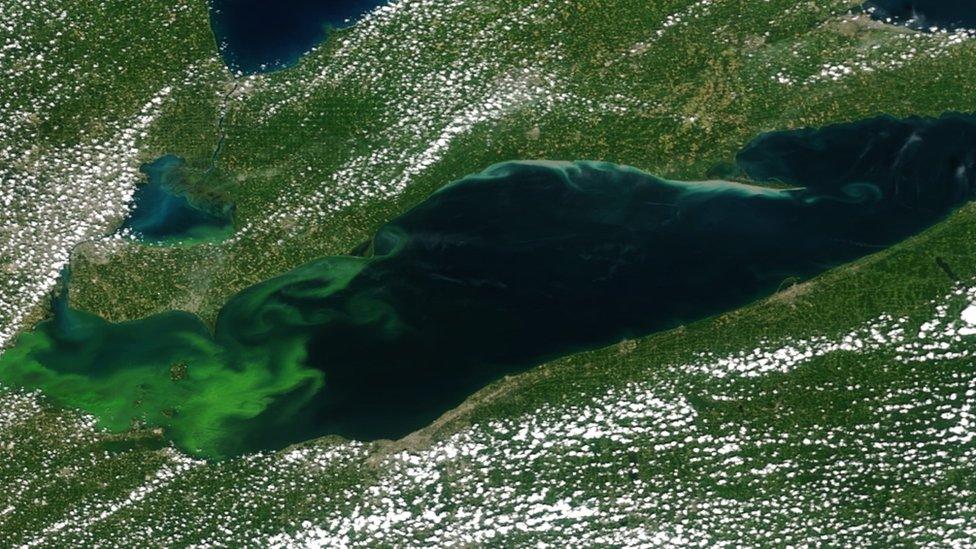
Dr Stumpf and his team use satellite imagery to track the algae bloom on Lake Erie
He said: "We've been trying to control surface water run-off, things like buffers along fields such as wetlands and storm water retention ponds.
"Anything that can absorb the nutrients before they end up in the lake."

How has this happened?
Lough Neagh is the largest freshwater lake in the UK and supplies half of Belfast's drinking water - and 40% of Northern Ireland's overall.
The blue-green algal bloom over the summer has caused havoc, not just in Lough Neagh but right up to Northern Ireland's north coast.
The bloom was the result of settled weather, invasive species and water pollution, mostly due to agriculture.
Excess fertiliser ran off fields into the water, carrying growth-stimulating nitrogen and phosphorus into the lough.
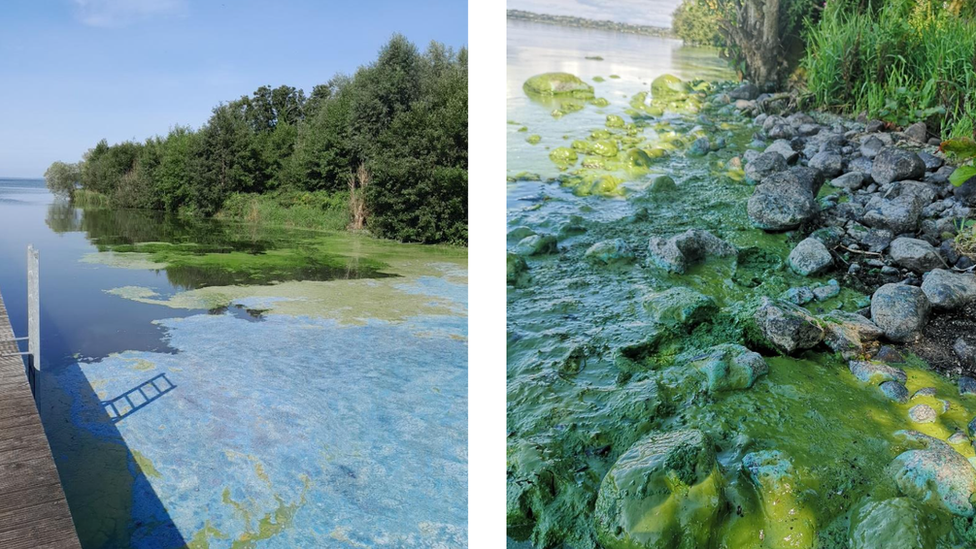
The blue-green algal bloom has been present in Northern Ireland this summer
Almost two decades ago the zebra mussel invaded the lough.
It filters water, making it clearer and allowing the sun's light to penetrate deeper into the depths.
That, combined with the excess nutrients from fertiliser - eutrophication - caused the algae to "bloom", or grow rapidly.
NI Water has advised consumers that the water from all their water treatment works is safe to drink and use as normal.

Part of the solution
Back in Northern Ireland, some say we need to be learning from the techniques used in the United States - and fast.
Dr Simon Doherty is from the Institute for Global Food Security at Queen's University Belfast.
He said: "If you think of people who have fish tanks in their home, they have a small filter in it, so what they're doing in the US is harnessing natural filters.

Dr Simon Doherty says we should learn lessons from Lake Erie
"So we should be looking at what natural, native species of plants can be grown around Lough Neagh's edge - things like reed beds - to act as filters."
He added: "It's all about taking some of the harmful nutrients out of the ground water and keeping them out of the lough - this might be part of the solution."
'It's not rocket science'
But government authorities in Northern Ireland say the algae problem in Lough Neagh is complex and there is no quick fix.
They point to the impact of an invasive mussel species creating clearer water and higher water temperatures having all contributed to the algae growing rapidly.
James Orr from Friends of the Earth believes there will be no solution until pollution and ownership issues are resolved.
He said: "It's not rocket science, we need to start tougher enforcement against the polluters.
"The reality is warning letters and enforcement notices don't do anything, because the fines are so weak."
The Department of Agriculture said that between 2018 and 2022, more than 1,000 river pollution incidents resulted in almost half a million pounds in enforcement penalties.
Willing to sell?
Meanwhile, the ownership issue is far from straight forward and dates to the Plantation of Ulster in the 17th Century.
The Shaftesbury estate owns the lough bed and the soil, the banks, the rights to sand extraction and shooting licences for wildfowl.
The Earl of Shaftesbury has told BBC News NI that he was open to selling - but only for a fair price.
But the National Trust, various councils, different charities and the Department of Agriculture, Environment and Rural Affairs all own areas around the lough, including national nature reserves.
The fact that no single body owns the lough, its water or the water that flows in and out of it, presents an opportunity, said James Orr.
"We need to look at the possibility of the lough having the legal right to own itself, it's called the Rights of Nature Movement," he said.
"It's the most dynamic new ecological movement across the world, it's really about affording legal enforceable rights to nature."
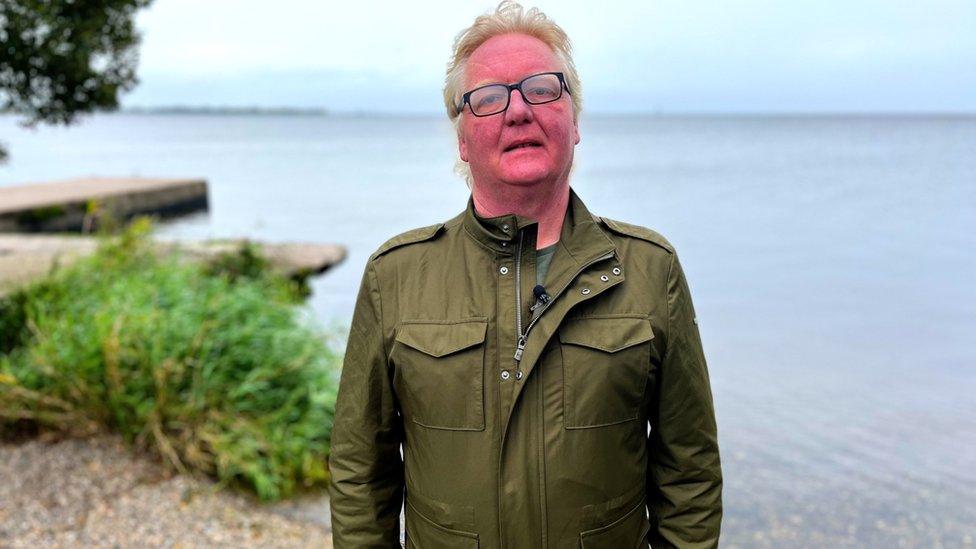
James Orr wants Lough Neagh to fall under the Rights of Nature Movement
In recent years, this movement has gained momentum, with several countries passing laws recognising the Rights of Nature.
However, implementing these laws has been difficult, and some courts have declared them to be "unconstitutionally vague".
'The lough is screaming at us'
The Department of Agriculture, Environment and Rural Affairs says Lough Neagh's problem is a complex, multi-factoral issue that will take years, if not decades, to solve.
"Part of that solution is to review the impact of current policies and interventions and exploring what we can do better in the short, medium and long term," said a department spokesman.
"This needs to be informed by science and evidence, including lessons from those other parts of the world which are also grappling with this same problem, and working with partners to deliver better outcomes."
But for James Orr, the message is simple.
"We need a solution, the lough is screaming out to us that it is at breaking point."
Related topics
- Published4 October 2023
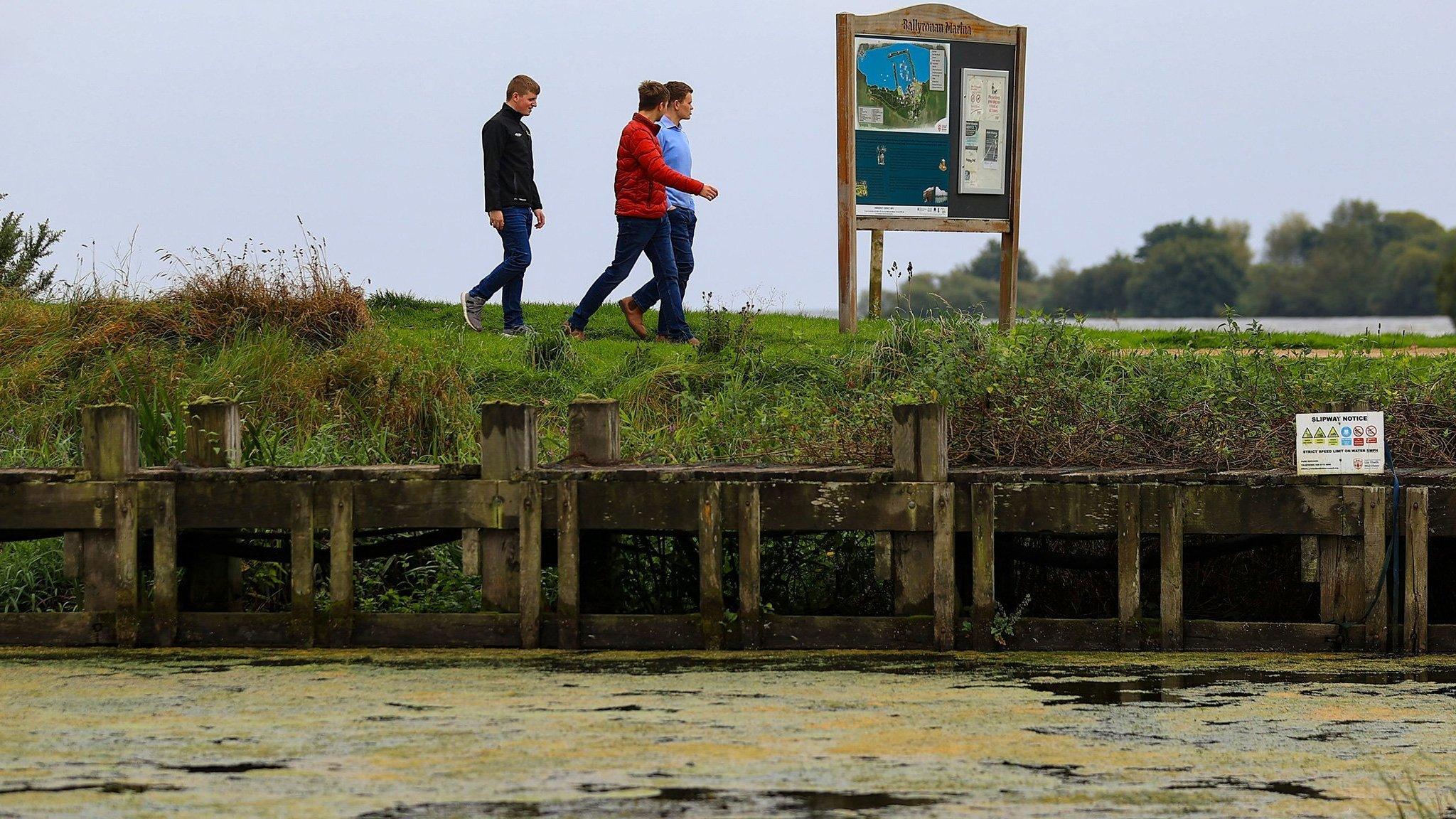
- Published4 October 2023
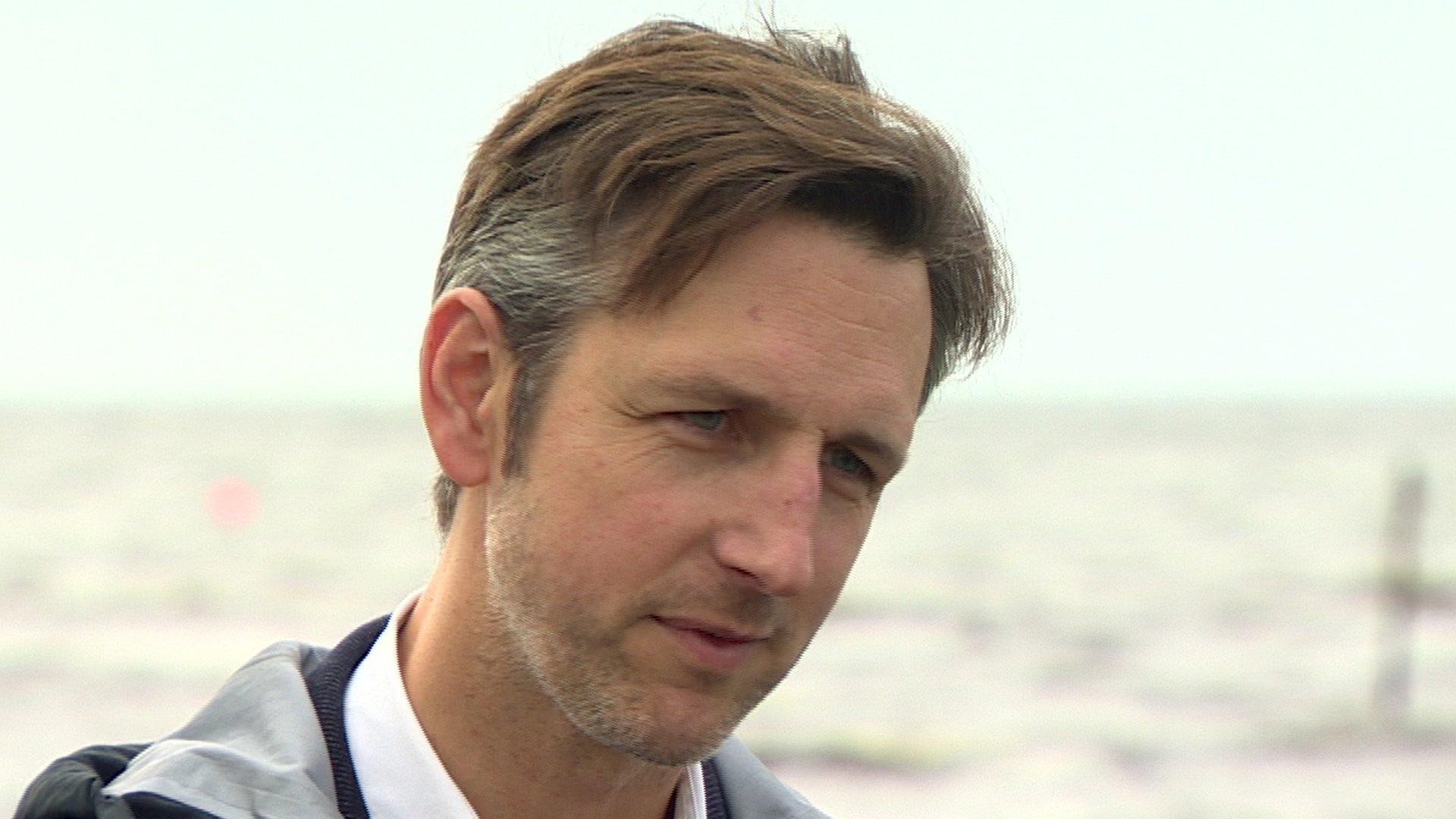
- Published4 October 2023
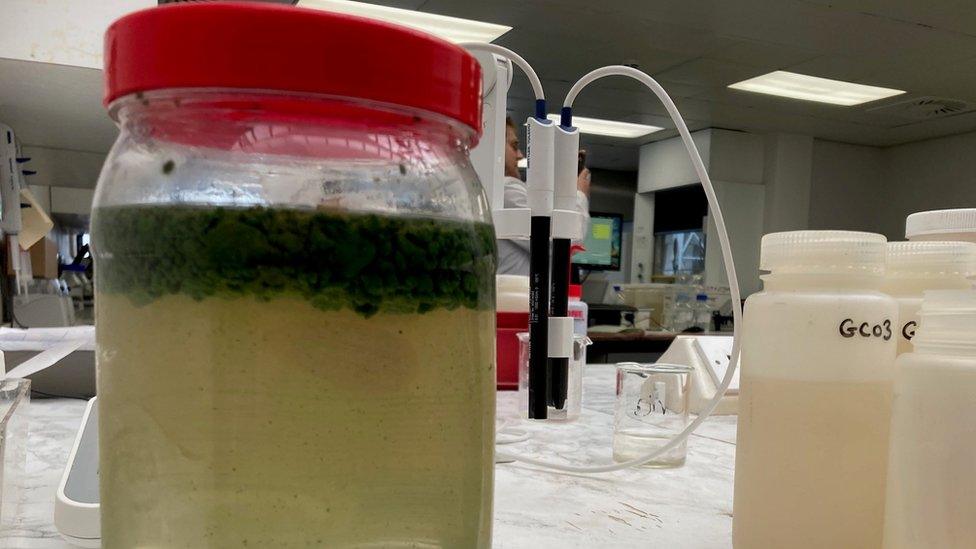
- Published3 October 2023
